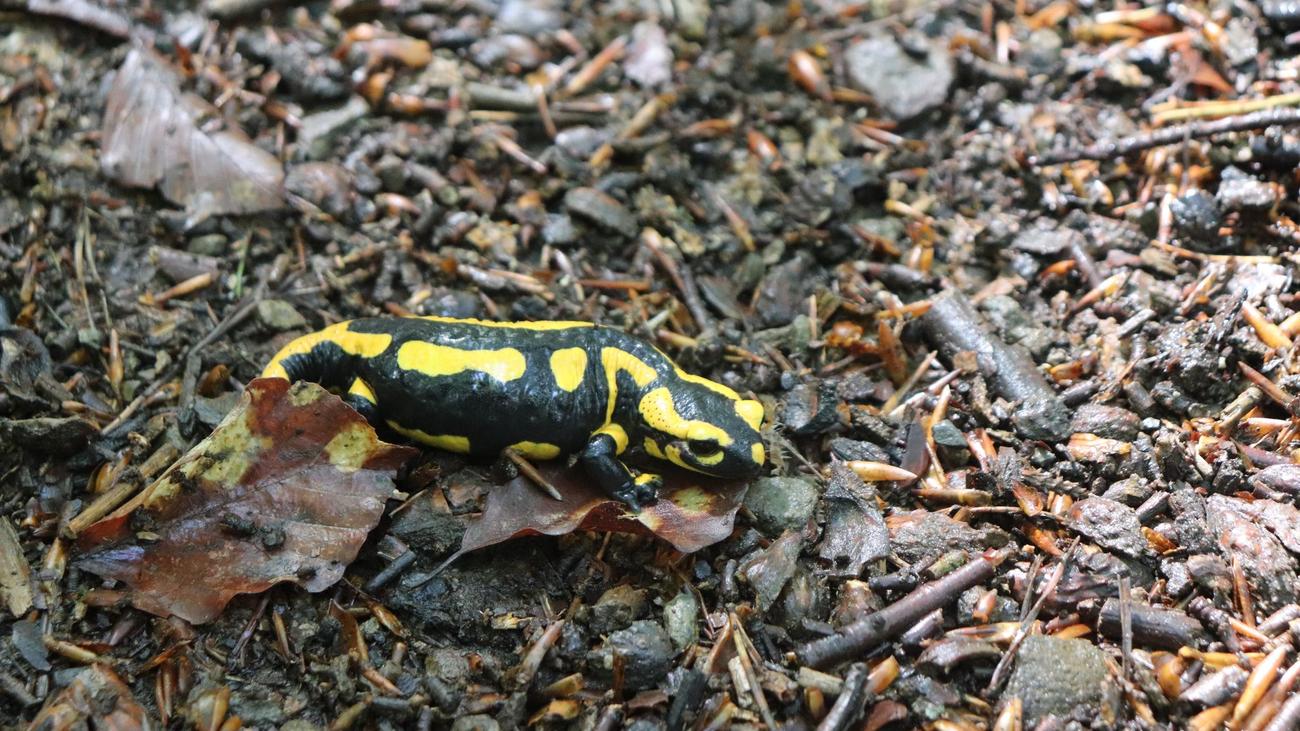
Deadly Fungus Ravages Fire Salamanders in German Nature Reserve
Kellerwald-Edersee National Park, Germany – A recent surge in the discovery of deceased fire salamanders in the Kellerwald-Edersee National Park has raised alarms among conservationists. Investigations conducted by the Institute for Biological Didactics at Justus-Liebig University Gießen have confirmed the presence of the deadly skin fungus, Batrachochytrium salamandrivorans (Bsal), as the likely culprit.
First Detection and Pathogenicity
Bsal was initially identified in November 2022 in a deceased fire salamander within the reserve. This highly infectious disease, also known as "salamander plague," is highly lethal to native fire salamanders and poses a significant threat to other species of amphibians. During the colder months, fire salamanders often seek refuge in caves or tunnels, providing an ideal environment for the rapid transmission of Bsal.
Imminent Conservation Concerns
"We anticipated increased sightings of dead fire salamanders this spring following the confirmation of salamander plague," said Nathalie Walz, a researcher in the National Park’s research department. "Our priority now is to prevent the spread of the fungus into the National Park’s core zone, where we hope isolated fire salamander populations can survive."
Mitigation Strategies
The National Park administration has implemented measures to mitigate the spread of the fungus:
- Visitors are urged to adhere to designated hiking and cycling trails.
- Dogs must be kept on leashes and away from streams, banks, and ponds.
- To prevent the transport of fungal spores outside the National Park, visitors are advised to thoroughly clean dirt from footwear and bicycle tires and store footwear in warm, dry conditions.
Public Assistance and Reporting
Disinfectant stations will be installed at National Park facilities and entrances south of Lake Edersee. The National Park administration solicits the public’s assistance in reporting any sightings of fire salamanders or deceased specimens through a designated website.
Origin and Spread
The Bsal fungus is believed to have been introduced through the importation of Asian amphibians for the pet trade. In Hessen, Germany, the first confirmed case was reported in June 2023 in a clay pit in Ober-Ramstadt-Wembach. The fungus poses no health risks to humans or their domesticated animals.
Impact and Implications
Fire salamanders play a vital role in forest ecosystems, contributing to nutrient cycling and controlling invertebrate populations. The decimation of fire salamander populations by Bsal has far-reaching implications, altering ecological interactions and potentially affecting ecosystem services.
Call to Action
The National Park administration emphasizes that every individual can contribute to preventing the spread of Bsal by adhering to the guidelines outlined above. Timely reporting of sightings and adherence to mitigation measures will aid in the conservation of this iconic amphibian species and the integrity of the Kellerwald-Edersee ecosystem.
